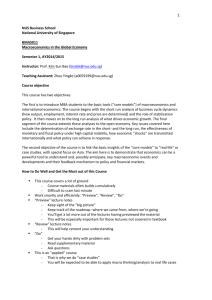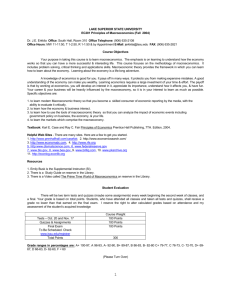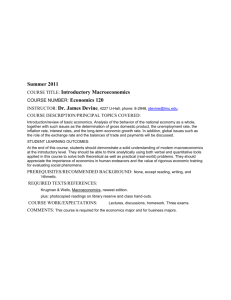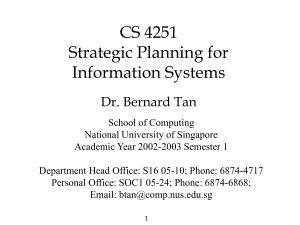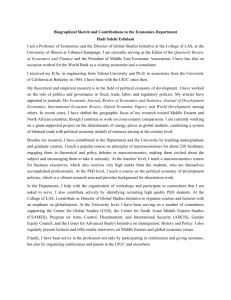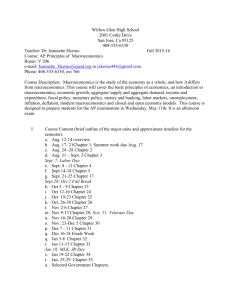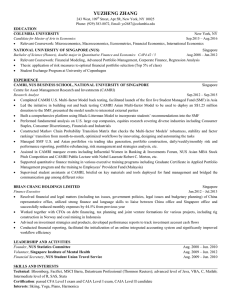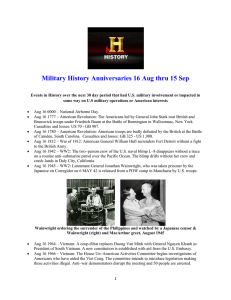Macroeconomics & Finance - NUS Business School
advertisement
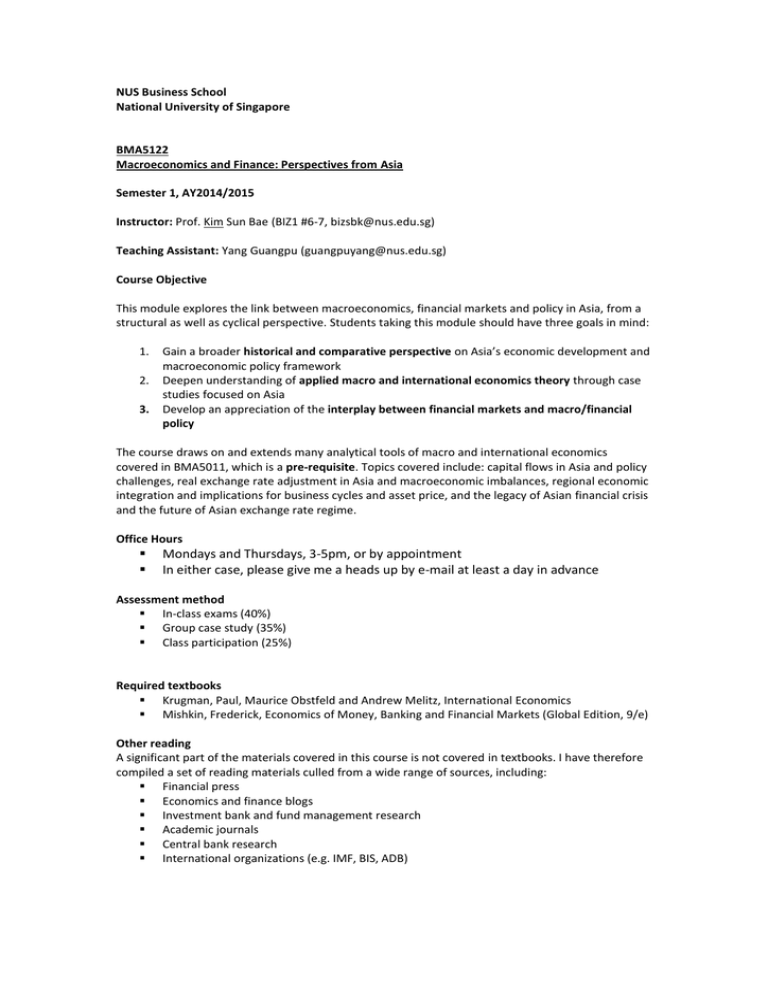
NUS Business School National University of Singapore BMA5122 Macroeconomics and Finance: Perspectives from Asia Semester 1, AY2014/2015 Instructor: Prof. Kim Sun Bae (BIZ1 #6-7, bizsbk@nus.edu.sg) Teaching Assistant: Yang Guangpu (guangpuyang@nus.edu.sg) Course Objective This module explores the link between macroeconomics, financial markets and policy in Asia, from a structural as well as cyclical perspective. Students taking this module should have three goals in mind: 1. 2. 3. Gain a broader historical and comparative perspective on Asia’s economic development and macroeconomic policy framework Deepen understanding of applied macro and international economics theory through case studies focused on Asia Develop an appreciation of the interplay between financial markets and macro/financial policy The course draws on and extends many analytical tools of macro and international economics covered in BMA5011, which is a pre-requisite. Topics covered include: capital flows in Asia and policy challenges, real exchange rate adjustment in Asia and macroeconomic imbalances, regional economic integration and implications for business cycles and asset price, and the legacy of Asian financial crisis and the future of Asian exchange rate regime. Office Hours Mondays and Thursdays, 3-5pm, or by appointment In either case, please give me a heads up by e-mail at least a day in advance Assessment method In-class exams (40%) Group case study (35%) Class participation (25%) Required textbooks Krugman, Paul, Maurice Obstfeld and Andrew Melitz, International Economics Mishkin, Frederick, Economics of Money, Banking and Financial Markets (Global Edition, 9/e) Other reading A significant part of the materials covered in this course is not covered in textbooks. I have therefore compiled a set of reading materials culled from a wide range of sources, including: Financial press Economics and finance blogs Investment bank and fund management research Academic journals Central bank research International organizations (e.g. IMF, BIS, ADB) Students are encouraged to read the assignment materials (as well as the lecture notes) before each lecture. Course Outline & Lecture Schedule Week 1 (Aug. 11) 1. Course Introduction 2. Equilibrium real interest rate & Secular Stagnation 3. Business Cycles, Financial Markets & Policy (Expectations & Asset Price) Week 2 (Aug. 18) 4. Business Cycles, Financial Markets & Policy (Financial Markets & Policy) 5. Case Study: Fed's exit from QE Week 3 (Aug 25) 6. Globalization of Financial Markets 7. Capital Flows in Asia Week 4 (Sep. 1) 8. Capital flows in China and policy challenges 9. Balance of payments and Foreign Exchange Crises Week 5 (Sep. 8) 10. FX Market: Background & Basics 11. Managing FX Risk: Theory & Practice Week 6 (Sep. 15): Mid-Term Exam Reading Week (Sep. 22-26) Week 7 (Sep. 29) 12. Real Exchange Rate: Equilibrium, Misalignment & Adjustment 13. Real Exchange Rate Adjustment in Asia Week 8 (Oct. 6) 14. Case Study: China Rebalancing 15. Case Study: India’s Malaise Week 9 (Oct. 13) 16. International Policy Spillovers & Coordination: Theory 17. Policy Spillover & Coordination in Asia: Practice Week 10 (Oct. 20) 18. Regional Economic Integration: Implications for Business Cycle Dynamics in Asia & Financial Markets 19. Evolution & the Future of Asia's FX regime 20. Bubbles & Financial Crisis Week 11 (Oct. 27) 1. Macroeconomics & Finance: Mainstream vs. “Heterodox” Approaches 2. Financial Structure, Financial Deregulation and Economic Growth in Asia Week 12 (Nov. 3) 3. 4. Student case study Student case study Week 13 (Nov. 10) 5. Student case study 6. Student case study Week 14: In-Class Final exam (Nov. 17)
